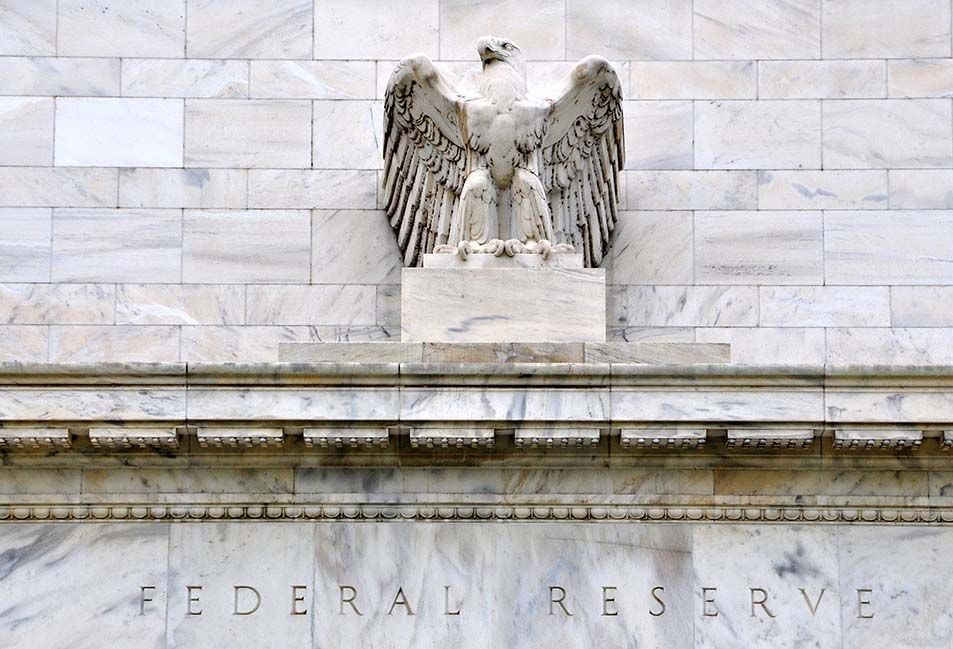US Dollar Dives after Federal Reserve's Jerome Powell Hints at Slowdown in the Pace of Interest Rate Hikes
- Written by: James Skinner
-USD slides after Powell talks policy in Jackson Hole.
-Hints of a 2019 slowdown in Fed rate rises, hitting USD.
-Comments may now have placed question mark over USD rally.

© Xiong Mao, Adobe Stock
The US Dollar took a dive Friday after Jerome Powell used a speech in Jackson Hole, Wyoming to hint at a possible slowdown in the pace of Federal Reserve rate hikes once into 2019.
Powell's speech at the annual symposium of central bankers in Jackson Hole was always slated as a likely pivotal moment for the Dollar, largely due to a more temperate outlook for the US and global economies, risks stemming from the so-called "trade war" with China and a recent rout in emerging markets.
The US Dollar has gained 6% over the South African Rand in the last month and close to 30% over the Turkish Lira. It has also notched up broad gains over the Russian Rouble and Brazilian Real as well as a host of Asian currencies.
Some analysts have expressed concerns that if Fed policy drives the Dollar much higher, it could endanger financial stability in the emerging world in a manner that might eventually backfire on the US.
"While inflation has recently moved up near 2 percent, we have seen no clear sign of an acceleration above 2 percent, and there does not seem to be an elevated risk of overheating. This is good news," Powell told his audience. "The economy is strong. Inflation is near our 2 percent objective, and most people who want a job are finding one."
The Fed has raised interest rates seven times since the end of 2015, including twice in 2018, taking the Fed Funds rate range to between 1.75% and 2%. Until Friday, most economist forecasts had suggested the Fed would raise rates so the top end of that range hits 3.25% around the end of 2019.
However, the market appeared to take Powell's speech as a signal the Fed will soon slow the pace of its interest rate rises, likely once into 2019.
The US Dollar index was quoted 0.49% lower at 95.19 following the address, after deepening an earlier 0.3% decline, although it fell a full 0.6% during the speech. The Pound-to-Dollar rate was 0.38% higher at 1.2857 and the Euro-to-Dollar rate was 0.61% higher at 1.1611.
"Should inflation stay relatively grounded, the balance of risk approach that Powell talks about could lean towards a somewhat slower pace of tightening in 2019, as rates get closer to where the Fed might see the neutral rate lying," says Avery Shenfeld, chief economist at CIBC Capital Markets. "For the near term at least, this was a careful defense of the next two hikes that are virtually baked in for the balance of this year, but the dollar (softening a bit) and rates (the same) seem to be guided by the headline comment about the lack of overheating risks."
The Jackson Hole speech follows closely behind President Trump's criticism of the Fed for its continued tightening of US monetary policy ever since Powell, who was nominated for the role by Trump, took the helm in February.
"President Donald Trump’s recent public criticism of Fed Chair Jerome Powell is a clever attempt to pre-emptively blame the Fed and its interest rate hikes for any future downturn in the US economy. The particular danger for him is that weakness could coincide with the 2020 election campaign, when he would be most vulnerable. We strongly doubt that the Fed will change its policy approach based on his cajoling," says Paul Ashworth, chief US economist at Capital Economics.
Friday's price action comes after talks between US and Chinese trade representatives appeared to end without any breakthrough or success in de-escalating the so called "trade war" between the two.
The White House has announced tariffs on around $250 bn of China's exports to the US, while China has retaliated with its own levies on around $50 bn of US goods, which has prompted fears of an all out "trade war" and helped drive the US Dollar higher ever since April. The Dollar index is now up 3% for 2018 after more than reversing a 4% first-quarter loss.
The White House has also raised the percentage tariff rate levied on $200 bn of Chinese goods, from 10% to 25%, since they were first announced and threatened to impose additional levies on even more China-produced goods that are imported into the US each year.
Chinese finance minister Liu Kun told Reuters Friday the Chinese government intends to keep hitting back at the White House but that, rather than slavishly matching the US tariffs, it will box clever. Kun wants to avoid unnecessary damage to the Chinese economy and to foreign businesses operating in China.
Advertisement
Get up to 5% more foreign exchange by using a specialist provider to get closer to the real market rate and avoid the gaping spreads charged by your bank when providing currency. Learn more here




